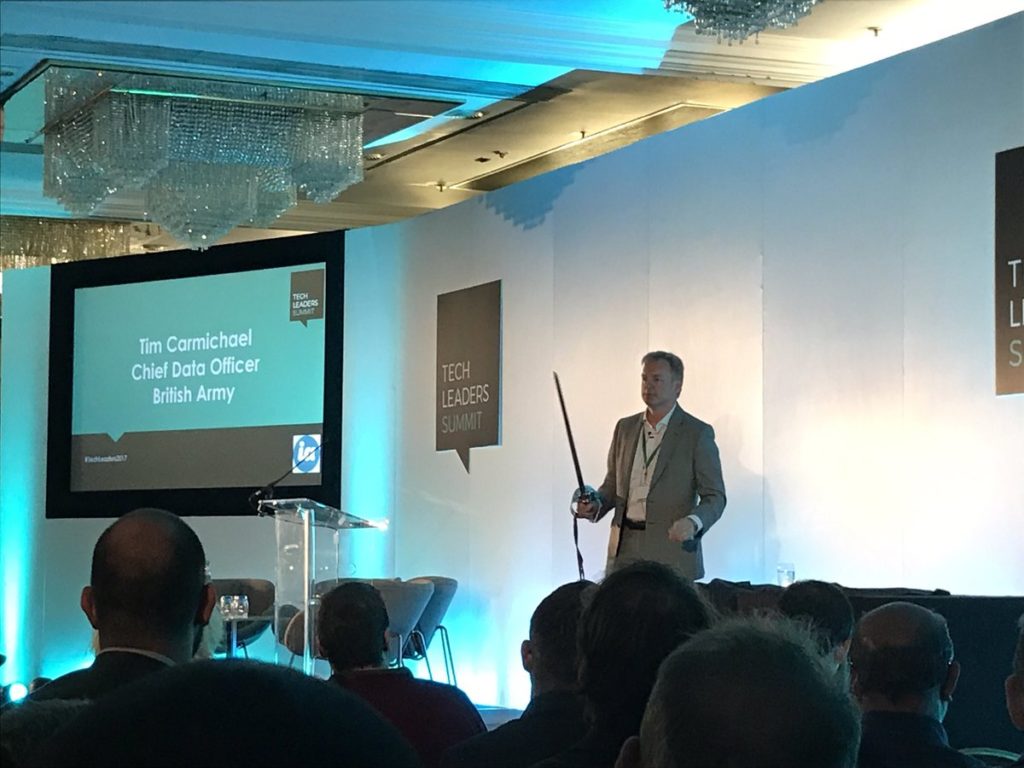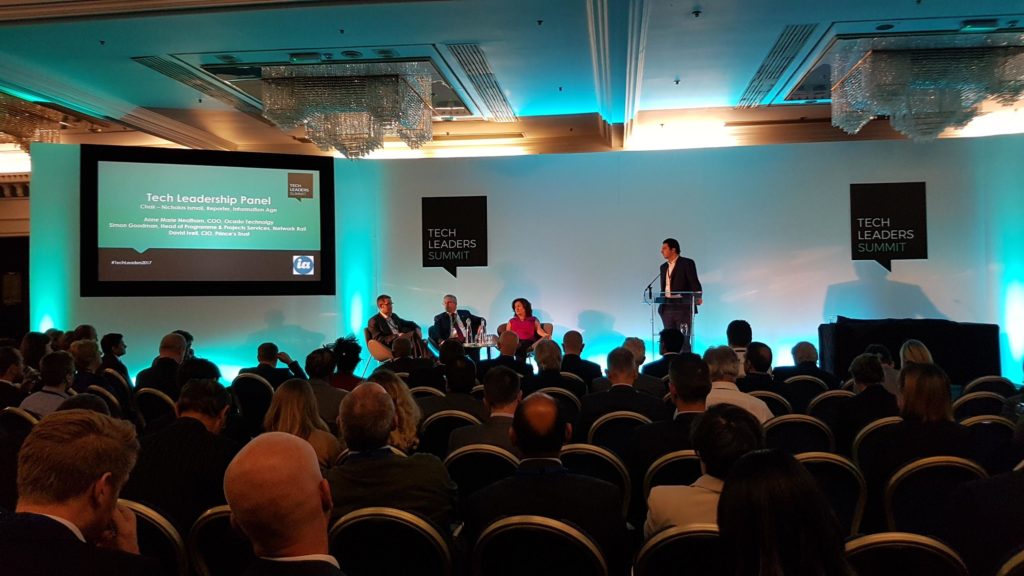Tech Leaders Summit, sponsored by Comarch, Darktrace, Energized Work, Pythian, redhat, think S3 and Zerto, was significantly bigger than the event last year, bringing together four packed out streams: Data Leadership, Security Leadership, Digital Leadership and Cloud Leadership.
In these compelling talks throughout the day, a range of experts discussed the challenges and opportunities surrounding the most disruptive innovations facing the enterprise.
>See also: Tech Leaders Awards 2017 – winners revealed
The conference kicked off with a lively keynote speech from the chief data officer of the British Army, Tim Carmichael. He began by explaining the importance of enabling decisions based on data, what he called the ‘science behind the art of insight’.
In a quite unexpected turn, Carmichael then produced a sword, which he explained could serve as a useful analogy for technology leadership – the focal point of his talk.
The condensed version of this was that leaders needed a clear strategy in mind before executing one. This needs to be communicated in a clear way, with a backup plan in mind: ‘what is my plan B?’
The need for balance between the backend and the frontend was also alluded to, with a complete focus on the outcomes and crucially, the defence from threats that could derail a project.

Losing a fight, Carmichael concluded, was not necessarily a bad thing. ‘Failure is a positive tool, as long as you learn quick and improve.’
>See also: Tomorrow’s Tech Leaders Today
One member of the audience commented that this was ‘a memorable and inspirational keynote’.
Indeed, following on from the original, if not slightly unexpected keynote speech, the first panel of the day began.
The panel was made up of Martyn Croft, CIO of the Salvation Army, Nadine Thomson, Director of Technology at Condé Nast International, John Gibbs, Group CIO at Rolls-Royce and Chief Data Officer of the British Army, Tim Carmichael.
Arguably the biggest take away from the technology panel was the culture/people challenge facing organisations. Thomson said that getting this right was make or break for digital transformation efforts.
In terms of best practices, Croft said that keeping things moving was vital to success. He emphasised the importance of integrating IT into operations. IT, after all, is the only function that is relevant across the whole of an organisation.
It was also noted that tech is only the tool, it is the ‘information that makes the difference’.
>See also: The UK’s top 50 data leaders 2017
After this panel discussion a plethora of breakout sessions began focusing on cloud leadership, data leadership, security leadership and digital leadership.

One attendee was impressed with the ‘short sharp nature of the speakers and the variety was good and entertaining’.
The afternoon panel consisted of Anne Marie Neatham, COO at Ocado Technology, Simon Goodman, Head of Programme & Project Services at Network Rail and David Ivell, CIO of The Prince’s Trust. It went into more detail around the topic of innovation in the enterprise, and the future of public services and digital transformation. Ultimately answering, how organisations can keep pace with innovations.

The key message to blue-chip organisations came from Neatham: ‘The moment you begin to feel comfortable is the moment you should push harder in digital age’.
More expert sessions continued after this panel, before the curtains drew on this second Tech Leaders Summit.










